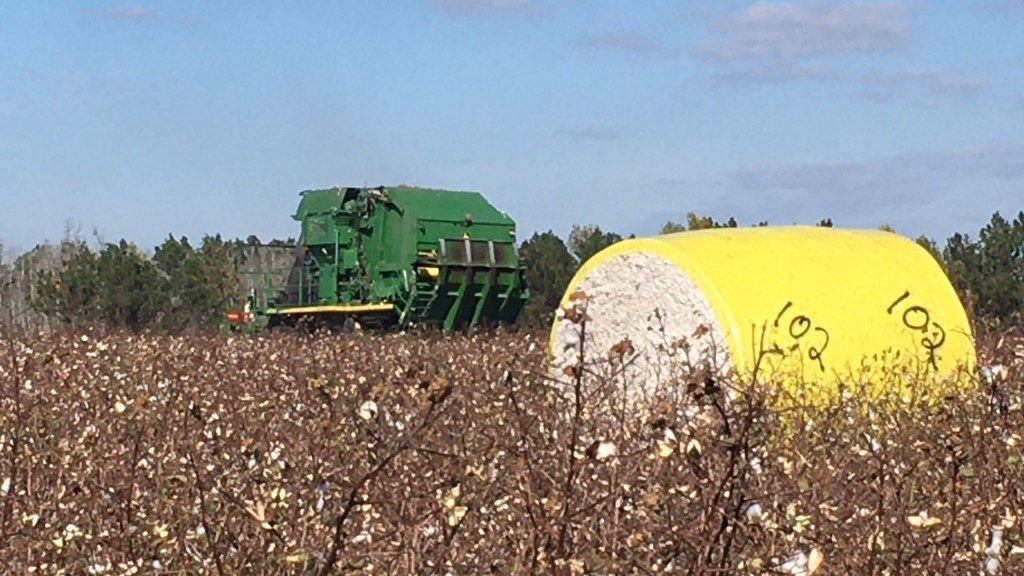The weather has been interesting the last couple of weeks. There was a report or two of hail last week on the west side of the county. According to the Georgia Weather station network, 4 inches of rainfall was recorded at the Sunbelt Ag Expo weather station for the week of June 24-30, 2025.

The 7 day total precipitation for Colquitt County showing rainfall estimates upward to 4 or so inches of rain.
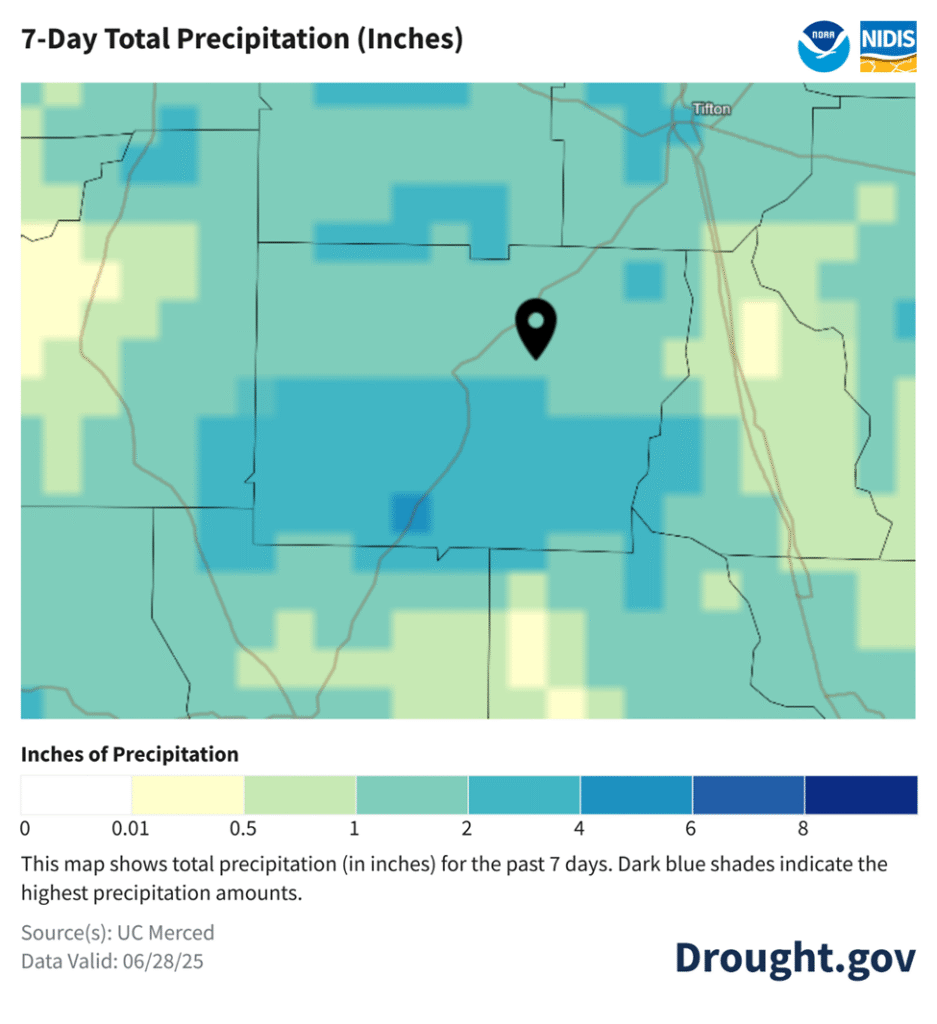
Peanuts: The peanut crop ranges from 25 to 70 days old. Insect pressure has been low but there has been a few comments about worms. White mold applications are going out on 60 day peanuts. Still getting questions on weed control.
I had a question or two about how to replace chlorothalonil in a peanut fungicide program. Let us hear some words of wisdom from Dr. Bob on this subject.
1. Early season, Absolute Maxx or Aproach Prima can replace a chlorothalonil application
2. Early season, an application of Lucento or Priaxor can replace two chlorothalonil applications
3. Later Provost Silver (and generic formulations) or Provysol + teb more than replaces chlorothalonil
4. Specific Albert Culbreath tested and approved formulations of micronized sulfur can replace chlorothalonil when tank mixed with 1) Excalia, 2) Elatus, 3) Umbra, 4) azoxystrobin, 5) tebuconazole, 6) pyrsclostrobin
5. Chlorothalonil can be replaced by Alto on tank mixes with Excalia and Elatus
6. Dodine/Elast fungicide is a replacement for chlorothalonil for peanut leaf spot control.
7. Tetraconazole (NOT the same as tebuconazole) is also a leaf spot material (for example Domark) that can be applied at the higher rate in a similar way Alto can be used. I really like Tetraconazole + chlorothalonil, but there are other ways it can be used.
Dr. Abney had the opportunity to do a bioassay of BAW collected from a peanut field in Colquitt County. The larvae were placed in Petri dishes with three peanut leaves and moist filter paper. The leaves were treated at 15 gpa in the field with a backpack sprayer and collected about 15 minutes after application. There were 5 larvae per dish and 6 dishes per treatment. Moribund is defined here as: the insect did not right itself within 5 seconds of being placed on its back. The products and rates are listed below.

Cotton: Aphid populations are climbing in some areas. According to Dr. Roberts, research conducted in Georgia does not consistently demonstrate a positive yield response to controlling aphids. Invariably, some fields would likely receive help from an aphid insecticide application during some years. Factors to consider when deciding about spraying aphids include general plant health and the environment. We would expect yellowing of terminal growth or lower leaves, reduced plant vigor, high amounts of honeydew, and drought stress or combinations of these to increase the likelihood of seeing a yield response to treatment. Before treating aphids, be sure there is no sign of the naturally occurring fungus in the field or immediate vicinity.
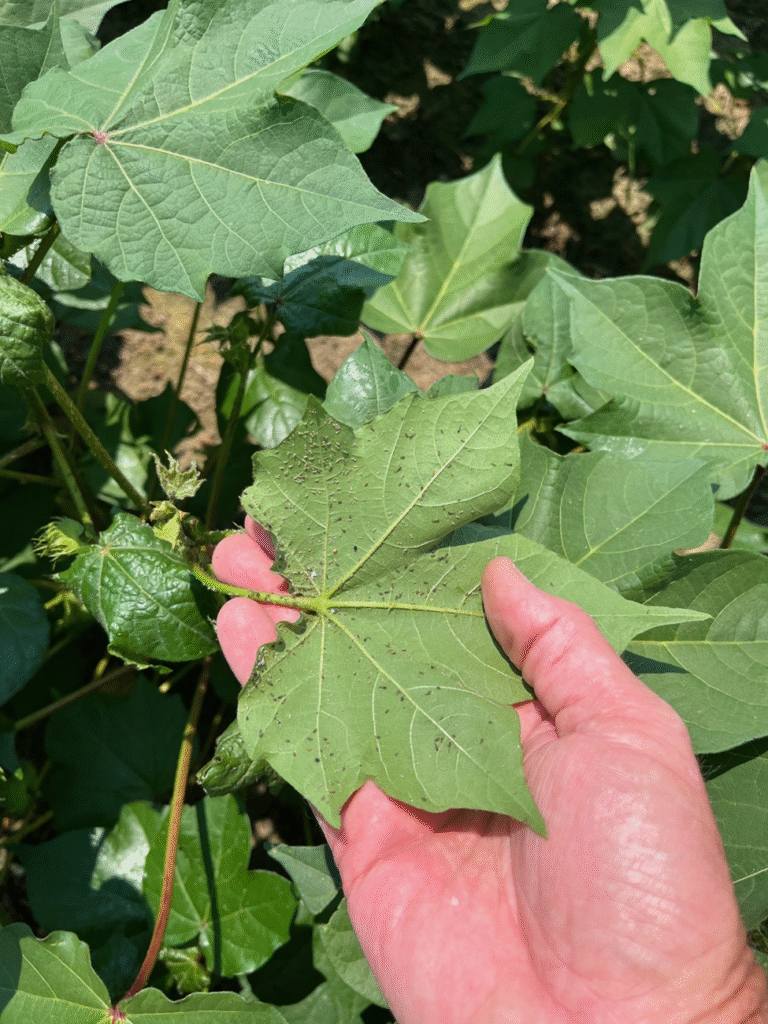
Whitefly populations increased in a few of Tanner’s whitefly sticky cards this past week. The chart shows the whitefly captures over a three-week period at 7 locations.

Dr. Hand has provided a table that shows the PGR responsiveness of cotton varieties. It is a relative gauge of variety responsiveness to PGRs – the top group are most aggressive and require more intensive PGR management while the bottom group are the most responsive to PGRs and may only require one or two applications.

How much nitrogen do I need for grain sorghum? – Typical N requirement for sorghum is 1.2 lb/ac N for every bushel of yield. A 120 bu/ac yield would require 144 lb/ac N minus any soil residual N. Keep a soil level of 60 to 80 lbs of phosphorus (P2O5). If P fertilizer is needed, rates can be reduced if banded. Sorghum potassium (K2O) requirements are like that of nitrogen. In soils with a high sand content, N and K can leach out of the plant root zone under high rainfall or irrigated conditions. In these soils a split application is recommended. Keep in mind that no more than 8 lb of N and K should ever be applied directly with the seed in the seed furrow. It is best to apply fertilizer at least 2 inches away from the seed.
What about weed control in sorghum? It is very important that the field is free of weeds before planting sorghum. A good preemergence program is essential.
• Preemergence (PRE): Either S-metolachlor (Dual Magnum), acetochlor (Warrant) or dimethenamid-P (Outlook) should be applied at or just after planting. Sorghum seed MUST BE TREATED WITH CONCEP safener. On heavier soil types, consider adding atrazine (Aatrex) at 1.0 lb ai/A. If atrazine cannot be applied PRE, it can be applied at 1.2 lb ai/A postemergence and applied with crop oil to control any emerged weeds and to also provide residual broadleaf weed control.
• Postemergence (POST): No herbicide should be applied until the sorghum has 3 fully expanded leaves. Normally herbicides can be applied 7 days after all the sorghum plants have emerged. If atrazine was not applied PRE, it can be applied POST. Atrazine must be applied before the sorghum is greater than 12” tall. In fields where atrazine resistance is an issue and/or a large diversity if weed species exist, consider tank-mixing Huskie (bromoxynil + pyrasulfotole) with atrazine. Huskie plus a low rate of atrazine will cause some temporary sorghum injury (leaf burn, bleaching).
• Check with UGA County Extension Agents and Weed Specialists and the most recent edition of the UGA Pest Control Handbook for other herbicide options as needed.
Corn: The corn crop ranges from VT to milkline. The rain has made irrigation scheduling a little easier. The counties with positive locations of Southern rust map is shown below.

The water requirements start to decrease when the crop reaches dent. The estimated water use of corn in Georgia from blister stage to black layer is below.

Why is my hay going through a sweat after baling? Unless the forage is extremely dry, micro-organisms (fungi, mainly) can grow. As these organisms grow, they give off heat. Even at the target moisture for hay, the temperature of the bales may increase for the first 2 – 3 weeks after baling. Some call this going through a “sweat” because, during this stage, some moisture is driven off and the forage drops to a stable level of moisture of about 12%. During this phase, bale temperatures often go as high as 120° F. This is perfectly normal.
References: https://georgiaforages.caes.uga.edu/content/dam/caes-subsite/forages/docs/national-press/2013/HFG1306.pdf
I got a question or two about late planting of pearl millet for grazing. Dr. Dennis Hancock (former UGA forage agronomist) conducted research looking at the effect of delayed planting on total dry matter (DM) yield and the distribution of the yield produced by pearl millet over three years in a small plot experiment at the University of Georgia’s Plant Sciences Farm located near Watkinsville, GA, from 2007 to 2009. Staggering plantings beyond late April may not improve yield distribution within the forage system because of the yield decreases associated with later plantings of pearl millet. This research article, “Late Planting Date Influences the Yield and Distribution of Pearl Millet Forage,” was published in the journal Forage and Grazingland Research in 2010.
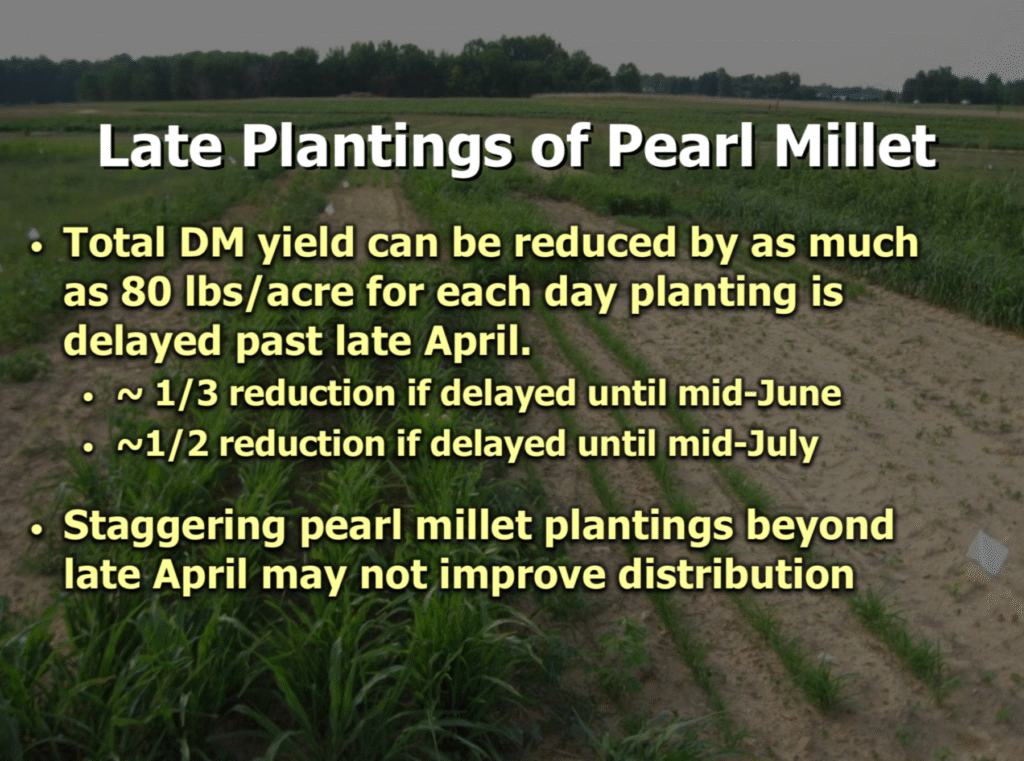
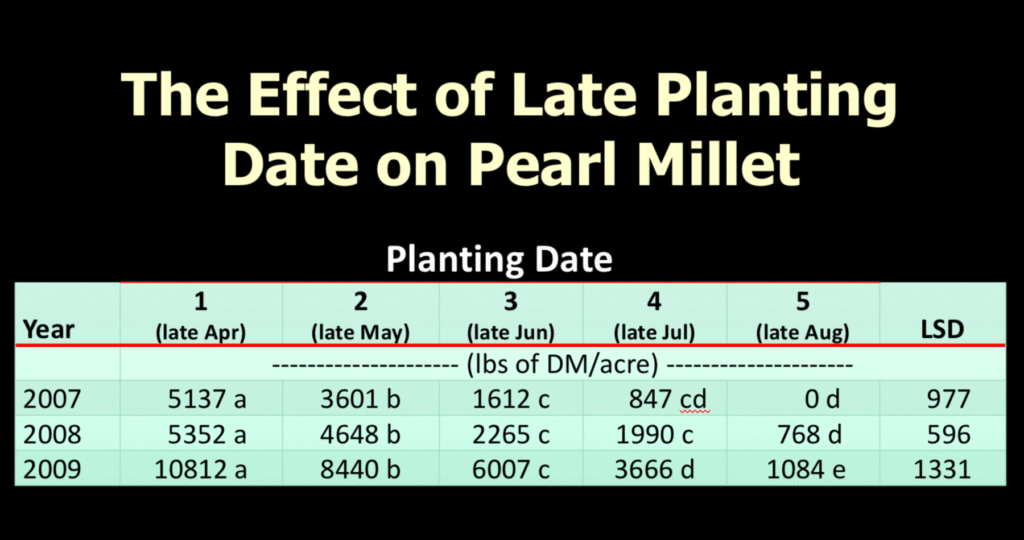

Have a safe Fourth of July and if you have questions please call the office,
Jeremy M. Kichler
Colquitt County Extension Coordinator
The University of Georgia Cooperative Extension does not endorse or guarantee the performance of any products mentioned in this update.
